Turbo Air TL18 Handleiding
Bekijk gratis de handleiding van Turbo Air TL18 (8 pagina’s), behorend tot de categorie Afzuigkap. Deze gids werd als nuttig beoordeeld door 8 mensen en kreeg gemiddeld 4.6 sterren uit 4.5 reviews. Heb je een vraag over Turbo Air TL18 of wil je andere gebruikers van dit product iets vragen? Stel een vraag
Pagina 1/8

10401253465/01
TL18GR
C
C
FIG.2
300
148
562-862
ISTRUZIONI DI MONTAGGIO
INSTALLATIONS INSTRUCTIONS
INSTRUCTIONS DE MONTAGE
EINBAU-ANWEISUNGEN
INSTRUCCIONES DE MONTAJE

ISTRUZIONI Dl MONTAGGIO
CAPPA SOTTOPENSILE "TL18GR"
Leggere attentamente le istruzioni prima di procedere al montag-
gio
La Vostra nuova cappa può essere utilizzata nelle seguenti versioni:
Aspirante
In questo caso è necessario collegare, tramite la flangia (fornita in
dotazione), la cappa ad una tubazione (Ø interno 100“125 mm.) di
scarico ad evacuazione esterna.
Filtrante
L'aria viene depurata da un filtro a carbone vegetale attivo (Fig.2/C)
per essere poi riciclata nell'ambiente stesso.
Uso Estate/Inverno
Per evitare dispersione di calore consigliamo di usare, in inverno, la
cappa in versione filtrante. L'aria calda, depurata, viene così reimmessa
nell'ambiente. Le cappe installate in versione aspiran-te sono facilmente
trasformabili in versione filtrante e viceversa.
Montaggio
La cappa deve essere fissata direttamente sotto un mobile pensile,
inoltre la cappa deve essere montata sopra al centro del piano di
cottura. La distanza minima fra il piano di cottura e la superficie inferiore
della cappa deve essere 650 mm.
N.B. Tale distanza è comunque soggetta alle normative in materia di
sicurezza in vigore nei vari paesi.
Cappa Aspirante
In funzionamento aspirante bisogna osservare le prescrizioni seguenti.
L'aria evacuata non deve essere immessa in un condotto di circolazione
d'aria calda. Per l'allacciamento della cappa aspirante è vietato collegare
lo scarico a canne fumarie, canali di scarico e canne per l'aerazione
di locali espositivi. Con scarico in canne fumarie o canali di scarico fuori
funzione è consigliabile farsi rilasciare il benestare dal responsabile
competente per lo stabile. Nel caso di cappa in versione aspirante, I'aria
attraverso il canale di aerazione, viene aspirata e condotta verso l'alto
oppure direttamente all'esterno.
N.B. L'efficenza della cappa aspirante diminuisce al crescere della
lunghezza e del numero di deviazioni del tubo di scarico!
Cappa Filtrante
In caso di cappa dotata di filtro a carboni attivi non è necessario che
la flangia di uscita sia collegata al tubo.
Fissaggio sotto un elemento pensile
N.B. Assicurarsi che il mobile sostenga il peso della cappa.
Ribaltare il mobile.
Segnare la posizione dei fori.
In corrispondenza dell'uscita va effettuato un foro per la flangia Ø 100/
125 sul mobile (Ø 104/140 mm.).
Praticare i fori di fissaggio (con punta Ø 5 mm.).
Appoggiare il pensile sulla parte superiore della cappa ed avvitarlo alla
stessa con 4 viti autofilettanti fornite a corredo.
Collegamento elettrico
Controllare che i valori della tensione d'alimentazione corrispondano a
quelli della targhetta di funzionamento dell'apparecchio. Attenzione: se
l'apparecchio non è provvisto di spina, nella installazione fissa deve
essere previsto un dispositivo di separazione che assicuri l'onnipolare
disinserzione della rete con una distanza di apertura dei contatti di
almeno 3 mm.
Nota — Per sostituire un cavo di alimentazione danneggiato, deve
essere chiamato il Servizio Assistenza, in quanto occorre un utensile
speciale.
Manutenzione
N.B. In caso di interventi disinserire la spina dalla presa di corrente.
Il filtro per grassi deve essere lavato in acqua calda e detersivo ogni
10-15 giorni in condizioni normali di esercizio. Tale filtro assorbe i grassi
contenuti nei vapori, proteggendo la cucina ed i mobili dai residui di
sostanze grasse. Dopo alcuni lavaggi deve comunque essere sostituito.
Il filtro a carboni attivi si esaurisce in funzione delle condizioni di fun-
zionamento a cui è sottoposto; esso ha funzione di legare le sostanze
odorose e grasse che in sua assenza si depositerebbero sulle pareti
e sui mobili della cucina. Non può essere lavato; si consiglia di sostituirlo
almeno ogni 6 mesi.
Per sostituire i filtri sopradetti è sufficiente aprire la griglia della cappa
spingendo i fermi l'uno verso l'altro, quindi tirarla in avanti fino a liberare
il quadro comandi. Il filtro per grassi si libera togliendo i ferretti fermafiltro
che lo bloccano alla griglia, il filtro carbone girandolo in senso antiorario.
La pulizia esterna della cappa va fatta con una spugna umida con
detersivo liquido neutro o con un panno inumidito con alcool denaturato.
Evitare l'uso di prodotti contenenti abrasivi.
Norme di sicurezza
È proibito cucinare alla fiamma sotto la cappa. Per friggere si deve
tenere sotto controllo il lavoro per tutta la durata in quanto l'olio nella
friggitrice si potrebbe incendiare.
Onde evitare pericolo di incendio è necessaria la pulizia frequente sul
ventilatore e le altre superfici. Ciò può essere effettuato con un panno
e/o pannello imbevuto di alcoolo etilico. È inoltre importante smontare e
pulire, o sostituire, frequentemente ogni filtro installato sulla cappa.
Raccomandazioni per l'uso della cappa in posizione aspirante
Durante il funzionamento contemporaneo di una cappa aspirante e di
una fonte di calore che necessita dell'aria dell'ambiente (stufe a gas, ad
olio, a carbone, etc.) si deve prestare molta attenzione perchè tramite
la cappa si aspira dall'ambiente l'aria di cui si ha bisogno per la com-
bustione, creando una depressione.
Un funzionamento senza pericolo si ottiene quando nell'ambiente si ha
una depressione massima di 0,04 mbar, in tali condizioni si evita il
risucchio dei gas di scarico della fonte di calore. Tale risultato si ottiene
praticando nell'ambiente delle aperture che non possono essere chiuse
(non vanno bene porte, finestre, etc.) dalle quali l'aria necessaria alla
combustione possa affluire liberamente.
N.B. Per dare un giudizio si deve considerare, comunque, I'intera
conduttura di scarico previsto nell'appartamento. In caso di dubbio è
bene farsi consigliare o rilasciare l'autorizzazione dal responsabile dello
stabile. Nell'utilizzazione di fornelli a gas, del forno a gas etc. come pure
nell'uso della cappa in posizione filtrante tali precauzioni non sono
necessarie.
10401253465/01

it in its place, while the carbon filter can be freed by turning counter
clockwise.
The external parts of the cooker hood should be cleaned by using a
damp sponge and liquid neutral detersive or a cloth dipped in neutralised
alcohol.
Please avoid cleaning products that contain scouring agents.
Security regulations
Cooking «en flambe» under the cooker hood is forbidden. When frying,
constant watch must be given to all aspects of the ope-ration in particular
because oil heated to a high temperature becomes inflammable easily.
Frequent cleaning, in particular of the fan and the surfaces of the cooker
hood, will avoid the risk of fire. The cleaning can be done with a cloth
or small brush dipped in ethyl alcohol. Furthermore it is important to
replace frequently each of the filters fitted in the cooker hood.
Suggestions for the use in extraction mode (exhaust version)
When the cooker hood is used in the extraction mode it is advisable
to give particular attention to appliances and sources of heating at the
same time in use (e.g. gas and oil heaters, coal or coke fires etc.)
because the cooker hood sucks in the air which is needed for
combustion by the above mentioned appliances causing a depression.
During simultaneous use of heating appliances and cooker hood a max.
depression of 0,04 mbar is advisable. In these conditions the risk of
drawing in gases from heating appliances is avoided. This can be
obtained by openings which cannot be closed e.g. in doors and windows
or by other technical means. From these openings sufficient fresh air
for combustion should be able to enter.
Attention: To assess the situation fully all flues and vents in the
apartment should be taken into consideration. If there is any doubt then
it is advisable to obtain the approval of the responsible agency for the
building. These precautions are not required when the cooker hood is
used in the filtering version with carbon filter fitted.
INSTALLATION AND USER INSTRUCTIONS FOR COOKER HOOD
TYPE "TL18GR"
These instructions should be read carefully before the installation
is done
Your new cooker hood can be used in the following ways:
Extraction (exhaust mode)
In this case it is necessary to connect the hood to a tube (Ø 100“125
mm.) by using the connection piece which is supplied. The extracted
air is then expelled to the outside.
Recirculation (filtering mode)
The air is purified by means of an active carbon filter (odour filter - Fig.2/
C) and then returned into the room.
Summer/Winter use
To avoid loss of heat in winter it is advisable to use the hood as a
recirculation hood. Warm air is purified and then re-distributed into the
room. Cooker hoods which are installed as extraction hoods are easily
changed to recirculation hoods and vice-versa.
Installation
The cooker hood must be fixed directly under a kitchen unit, furthermore
it must be installed centrally above the cooking hob. The minimum
distance between the hob and the lower part of the cooker hood must
be 650 mm.
N.B. The above distance is subject to regulations in force for security
in the respective countries.
Extraction Hood
When used in the extraction mode following points should be considered:
The exhausted air should not be conducted in a chimney with warm air
circulation. Do not connect the appliance to fuel exhaust flues or ventilating
ducts. With venting into exhaust flues or ventilating ducts wich are no
longer in use, it is advisable to obtain the approval of the responsible
agency for the building. In the extraction mode the air is exhausted and
conveyed through the ventilating duct upwards or directly to the outside.
Attention: The shorter the exhaust duct is and the fewer bends there
are in it, the more effective will the cooker hood be.
Recirculation Hood
When the hood is used in the recirculation mode and fitted with a carbon
filter there is no need to connect the device (connection piece) to the
tube.
Installation under a Kitchen Unit
N.B. Check that the unit is able to support the weight of the cooker
hood.
Turn the unit upside-down.
Mark the holes for the screws.
Corresponding to the air-outlet a hole for the connection piece of Ø 104/
140 mm must be provided on the kitchen unit (for spigot of Ø 100/125
mm).
Drill the holes for fixing the hood with a Ø 5 mm drill-bit.
Lean the unit against the top part of the cooker hood and tighten it up
to the hood with the 4 self-threading screws.
Connecting to mains supply
Check that the mains supply is the same as that on the technical data
plate which is attached to the cooker hood.
Attention: If the appliance has no plug an allpole separation must be
provided in the separation of the net with a minimum contact width of
3 mm each pole.
Note — A damaged power supply cord must be changed by the
Service because require a special tool.
Maintenance
N.B. Before any repairs, servicing or cleaning is carried out the plug
must be disconnected.
The grease filter should be washed every 10-15 days in hot water with
detersive. It absorbs the particles of fat which become present during
cooking and protects the kitchen and its furniture from deposits of
grease. After successive washings however it should be replaced.
The carbon filter functions during any type of cooking and is highly
effective removing cooking smells and particles of grease which otherwise
would be deposited on the walls and the fur-niture. Carbon filters cannot
be washed. It is advisable to replace them every six months, depending
on how frequently the hood is in use.
In order to replace the filters mentioned above it is sufficient to open
the grid of the cooker hood by pushing the fixing devices one towards
the other pulling the grid outside until the control board is freed. The
grease filter can be taken off by removing the retaining clips that hold
Product specificaties
| Merk: | Turbo Air |
| Categorie: | Afzuigkap |
| Model: | TL18 |
Heb je hulp nodig?
Als je hulp nodig hebt met Turbo Air TL18 stel dan hieronder een vraag en andere gebruikers zullen je antwoorden
Handleiding Afzuigkap Turbo Air
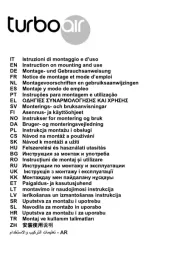
26 Februari 2025

9 Juli 2023

9 Juli 2023

9 Juli 2023

9 Juli 2023

8 Juli 2023

8 Juli 2023

7 Juli 2023

7 Juli 2023

7 Juli 2023
Handleiding Afzuigkap
- Saba
- Smeg
- AYA
- Pelgrim
- Bomann
- Neff
- Applico
- Fagor
- Zephyr
- Elica
- XO
- Royal Catering
- Pitsos
- Scancool
- Sharp
Nieuwste handleidingen voor Afzuigkap
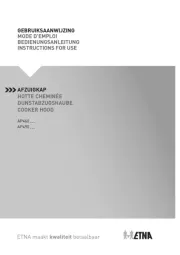
13 September 2025
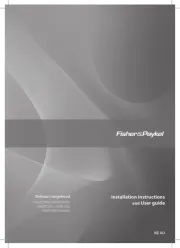
9 September 2025
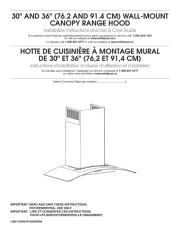
9 September 2025
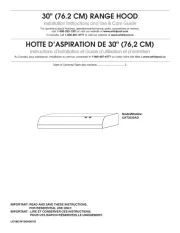
9 September 2025
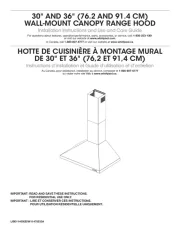
9 September 2025
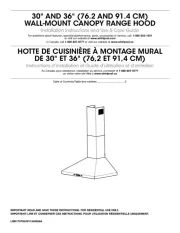
9 September 2025
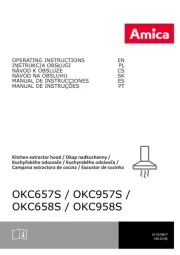
8 September 2025
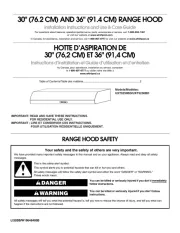
8 September 2025
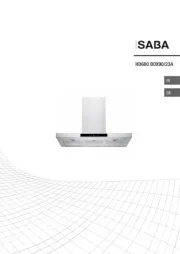
8 September 2025
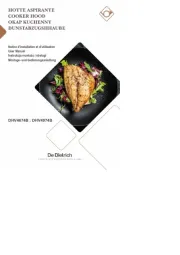
8 September 2025